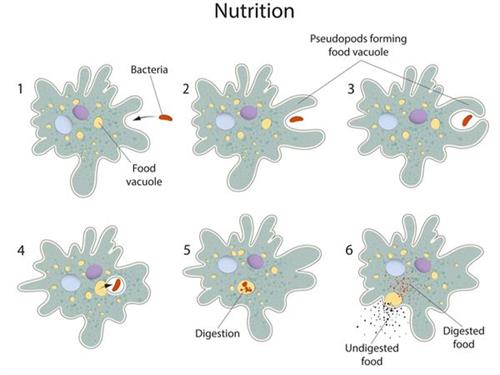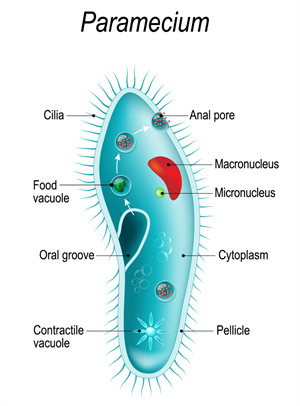
PUMPA - SMART LEARNING
எங்கள் ஆசிரியர்களுடன் 1-ஆன்-1 ஆலோசனை நேரத்தைப் பெறுங்கள். டாப்பர் ஆவதற்கு நாங்கள் பயிற்சி அளிப்போம்
Book Free DemoHow organisms obtain nutrition?
Since the food and ways through which nutrition is obtained differs, the digestive system is also different for organisms. In unicellular organisms, food is taken through the surface of the organism. While, in multicellular, complex organisms, different parts become specialised to perform different functions.
We will now look into holozoic nutrition in unicellular microorganisms - Amoeba and Paramecium.
Nutrition in Amoeba:
Amoeba is a unicellular, microscopic organism that inhabits ponds, a slow-moving rivers, and lakes. It swallows the food present in water and ingests the food using pseudopodia (finger-like extension of the cell surface). Two pseudopodia fuse over the food particle to form a food vacuole or a phagosome. The process of obtaining food by amoeba is called phagocytosis.
Inside the food vacuole, digestive enzymes break down the complex substances into simpler substances. The digested food diffuses into the cytoplasm, and the remaining undigested food is excreted and sent out.
Flowchart of nutrition in Amoeba:
Amoeba
Extension of cell membrane - pseudopodia
Engulfs and captures food
Ingestion through food vacuole
Digestion of food in food vacuole Diffusion of digested food
(through digestive enzymes)
Undigested food
Expelled out through the anal pore

Nutrition in Amoeba
Nutrition in Paramecium:
Paramecium is also a unicellular, microscopic protozoan. It has an elongated, slipper-like shape. The body of Paramecium is covered by a thin, firm and flexible membrane called the pellicle. It is composed of a gelatinous substance that provides the shape to it.
The body is covered by numerous, small hair-like projections called the cilia. Paramecium engulfs food through cilia (present on its body surface) through the oral groove. Food is ingested along with water to form the food vacuole.
Then digestion occurs through digestive enzymes that are released from the cytoplasm. Digestion is thus termed "intracellular digestion".
Digested food is absorbed into the cytoplasm through diffusion. After the absorption, the food vacuole shrinks. Absorbed nutrients are stored and used later for ATP synthesis or growth and development. Undigested food is ejected through the anal pore.

Paramecium